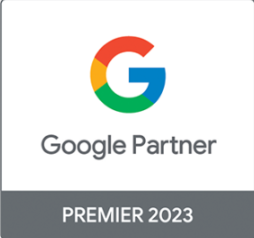A good marketing strategy for any company involves many parts all working together and should be designed to achieve the desired outcome, usually signups and sales. A huge part of the strategy is usually made up of paid media which comes in various shapes and sizes.
In this post, we will be looking at strategies around managing your SEO campaign alongside your paid search and display campaigns.
First, though, we need to understand the differences between paid and organic traffic behaviour in order to best match our strategies to our objectives.
Here are the most recent statistics comparing paid VS organic behaviour:
Organic Search users:
- 70-80% of all searchers ignore paid ads and focus only on organic results.
- Organic search leads lose at a rate of 14.6%, compared to only 1.7% for outbound marketing leads.
- Approximately 39% of total e-commerce traffic (worldwide) comes from search – 35% of it organic and only 4% of it through paid search ads.
- Ad blocker usage increased from 142 million to 615 million between 2018 and 2019.
Paid Search Users:
- 65% of all clicks made by “users who intend to buy” go to search ads.
- Paid traffic is 50% more likely to buy from you than organic traffic (as they have a higher intent).
- When you pause your ads, don’t expect an influx of organic traffic. Up to 89% of all paid traffic does not get replaced by organic when the ads are paused.
- The top three ad spots take 40% of total clicks on the page for “high-value commercial intent” searches. Source
As you can see, paid advertising does not reach a growing number of users, organic is your only shot, and paid traffic does not automatically return to your site, there is little loyalty to a site that purchased your visit. But paid traffic is high intent, and are 50% more likely to buy, so it is a valuable traffic source when targeted correctly.
So how do we determine where to SEO and where to PPC?
Don’t Bid on Brand
A well optimised site will have keywords mapped to each page and a content strategy that enforces the keyphrase focus of each page. If these pages are ranking well, there may not be a great opportunity to target paid traffic for those terms. In fact, targeting terms that your site has a strong ranking for (position 1-2) is likely to lead to a drop in organic visits.
Branded search, in particular, is best left to organic traffic – these visitors will mostly end up at your site anyway, and pretty much always have better engagement/revenue statistics than paid traffic.
Brand terms often are cheaper than head terms, but unless they add value to your campaign- i.e.revenue or key behaviours & a reasonable ROAS, it is just an unnecessary cost. Instead, focus that spend on driving new customers to your site.
No Wait, Bid on Brand Terms
Sometimes though, bidding on your brand terms is a good idea, and the loss in organic transactions is more than made up by paid traffic transactions.
When a direct competitor is bidding on your brand terms your best strategy is to bid on your brand terms. This has a double effect of increasing your search real estate and lowers the chances that a competitor is able to hijack your traffic.
And as ad come to dominate SERPs, particularly on mobile, this tactic is highly justified. Most times, the first organic result on mobile is a few scrolls away from the top of the page. Between them is usually a slew of ads and knowledge boxes and featured snippets – try to catch your visitors while they are still ‘hot’ and above the fold.
Gap Analysis
The simplest way to determine where these growth opportunities are is to run a gap analysis. This is a report that details your site’s current performance in search, where your impression share is high, and where it is weak. Where you find gaps or weak spots in your search visibility, you have found paid marketing opportunities.
This effectively grows your market share by increasing your search footprint, and any returning traffic from these campaigns becomes direct or organic traffic – both good SEO signals.
These gaps are also SEO opportunities, but since it takes time for you to create content and get the page ranking, paid search is the easiest way to get new traffic through your door quickly.
But the long term strategy should be to build up content and information to improve your organic rankings for these gaps and start driving ‘free’ traffic to your site.
Let Your PPC & SEO campaigns learn from each other
An easy yet effective way to inform your keyword strategy for SEO is to mine keywords & search terms from your paid campaigns. You will have traffic & conversion data for these, and every now and again you come across a new or undiscovered keyword that you can optimise a page on your site for.
In the same way that paid campaigns usually have dedicated landing pages, so should your SEO campaign make use of the same principle.
One page, one topic; High-value keywords mined from your PPC data can be targeted in search by optimising your page in incorporate your SEO targeting as well as the keywords & semantic phrases discovered from PPC. This helps your pages keep up to date & stay fresh, and allows you to target keywords that you already know are converting or have a high business value. Generally, these keywords and phrases will be closer to the bottom of the funnel so are suited more for pages that match this intent.
Search remarketing lets you have one more crack at visitors to your site that did not end up becoming a customer. This is a valuable exercise when looking at remarketing campaign performance from an SEO perspective – what caused the visitor to leave in the first place (you’ll have a list of visitors to analyse), and what tactics and strategies were successful in your remarketing campaign & remarketing landing page?
Understanding your wins and fails gives you the opportunity to build proven strategies into your SEO plan, and update or remove elements that are leading to undesirable behaviour.
Article Author : Peter Jooste




